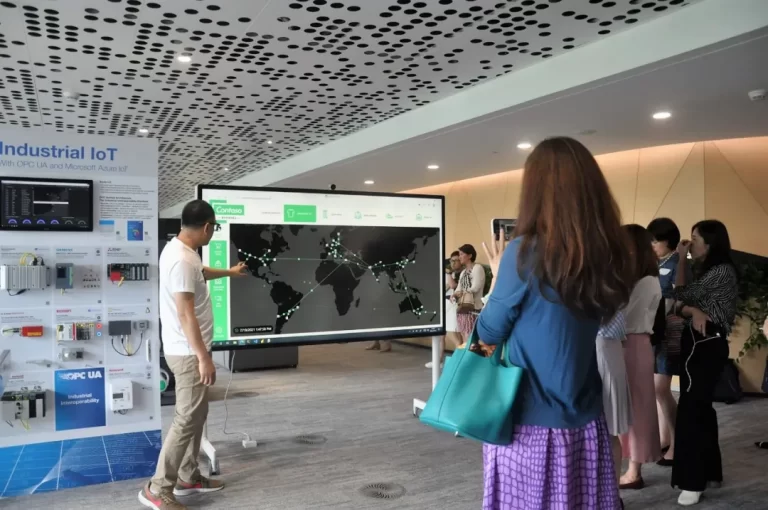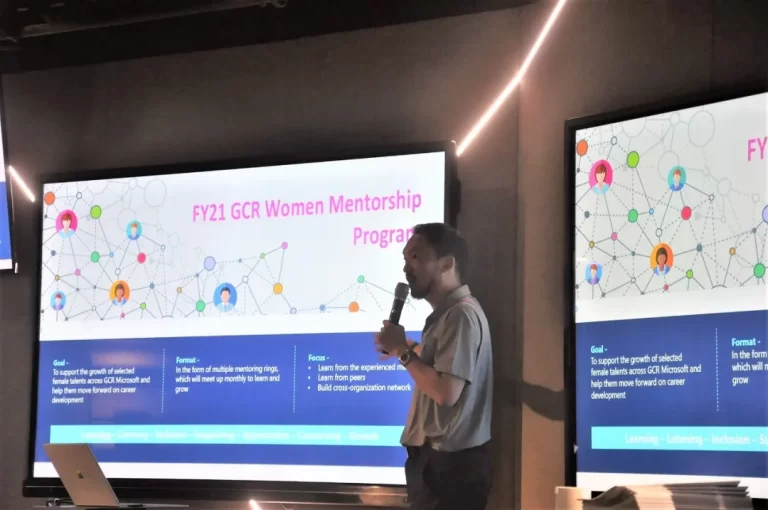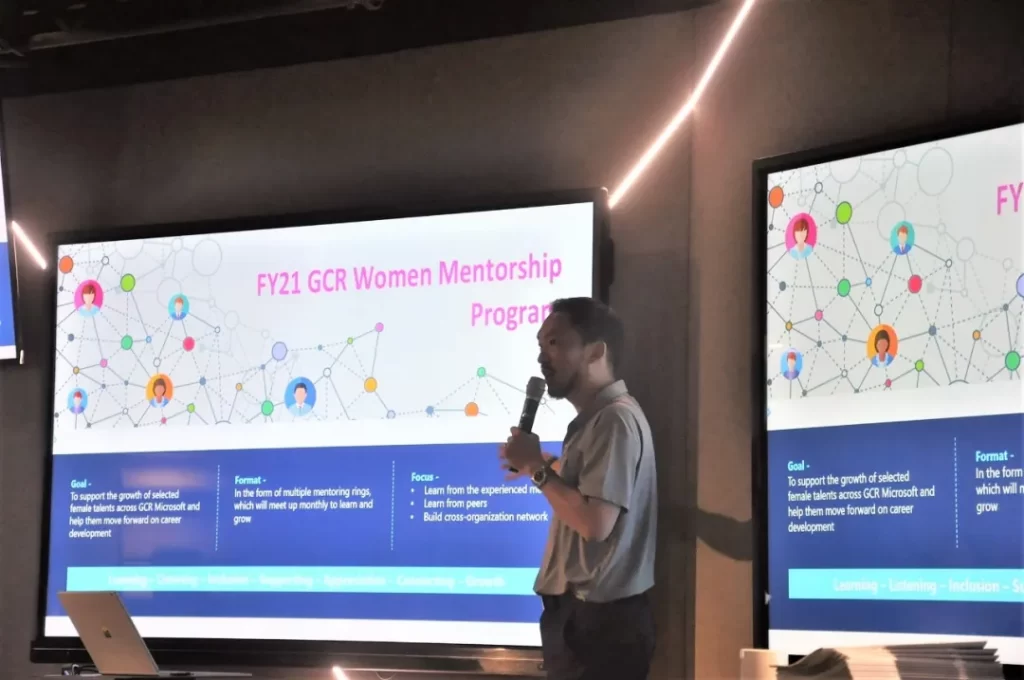This July, Microsoft hosted our Women Empowerment Council Members for a presentation and tour at their Beijing office. Event attendees had the opportunity to view Microsoft’s innovation products, as well as a thought-provoking presentation by the APAC Chief of Staff, Jason Tsao.
Tsao began his presentation with Microsoft’s mission: “to empower every person and every organization on the planet to achieve more.” Although the statement refers to ‘every person,’ Tsao demonstrates that he understands the gaps in gender representation and equality in STEM. In 2020, Microsoft and its acquired enterprises, such as LinkedIn and GitHub, tracked that their number of female employees increased by 1% in the last year. Tsao notes that the sales department within China, a team of approximately 1,000 employees, now has 40% of women on their staff, the first area to achieve this feat worldwide.
China is doing well to add more women to their workforce, still very few hold leadership positions. Speaking on the multiple roles women are expected to fulfill, Tsao acknowledges that they are still often penalized for taking maternity leave. Plus, societal expectations still tie women to their role as the main caregiver, and are more likely than men to carry out all or most of the household work. Tsao stated that 43% of highly qualified women take fewer promotions or choose to opt out of work completely after giving birth.
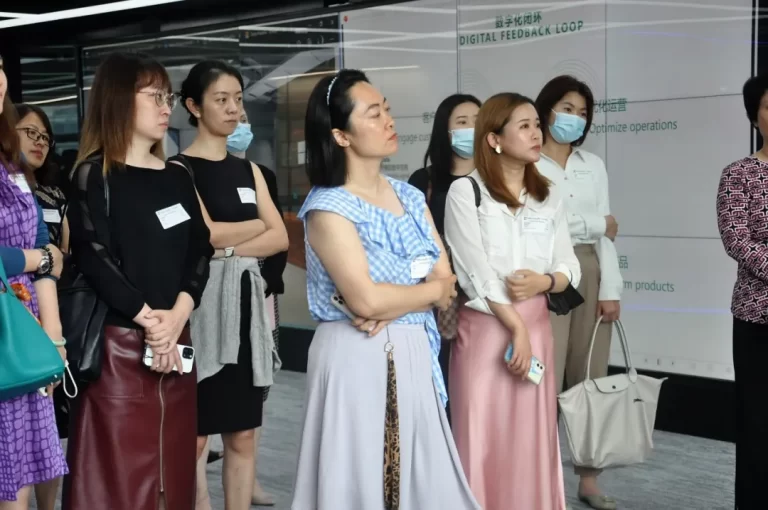
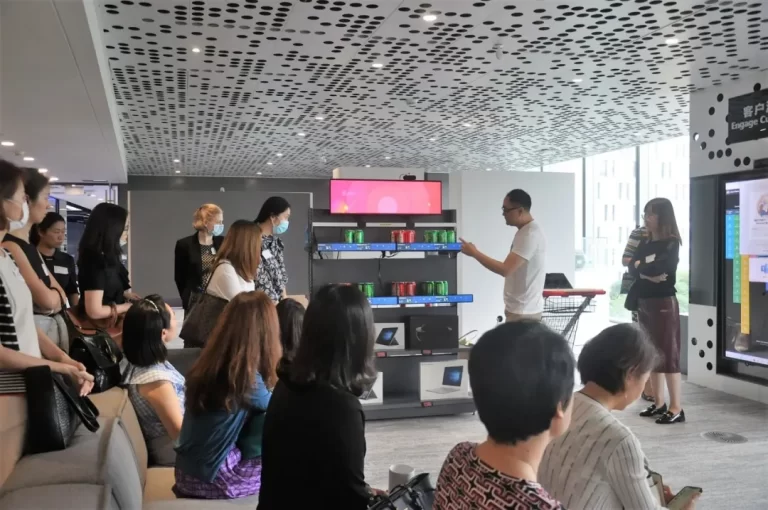
Tsao is also concerned about the lack of representation of women in emerging jobs, especially in data and AI, engineering, and cloud computing. Which respectively hold 26%, 15%, and 12% share in their representation of women. Although Microsoft’s mission is dedicated to everyone, they still support multiple initiatives, including: Women Digital Future (WDF), Microsoft Women Innovation Forum, Women Think Next, and their Ada Workshops, to encourage more Chinese women in STEM roles.
Tsao demonstrated how these initiatives aim to go beyond raising awareness and have missions to take action. Their Ada Workshops for example, partner with Chinese education authorities and universities to empower more Chinese female STEM students, ranging from undergraduate to PhD. While they have options like career talks and courses in data, cloud technologies, and AI, Ada Workshops also provide activities like job fairs and a roundtable and lunch with researchers and engineers.
Microsoft understands the importance of hiring women, Tsao brought up that they make up 50% of the world’s population, in essence, half the market. He also brought up the classic example of how the airbag often causes more damage to people with smaller frames. He said that having fewer women on research and development teams meant that women were also excluded from the design. If tech companies don’t hire women, they miss out on how to tailor their products and services to half their customer base. This example not only shows that this lack of inclusion brings lost opportunities, but can also be dangerous.
With 60 million new jobs expected to be added to the Chinese job market within the next five years, this is a good time to expand female representation in data, cloud technologies, and AI. Tsao recalls women coming up to him saying “I am a history major, I have no idea how to do programming,” they feel discouraged by their abilities or lack thereof. For women already finished with university, Tsao Microsoft’s work with WDF aims to close those technology skill gaps, even for women who have little experience with programming. Knowing all of Microsoft’s efforts to advance women in STEM, we are proud to have them as a member of the Women Empowerment Council.
